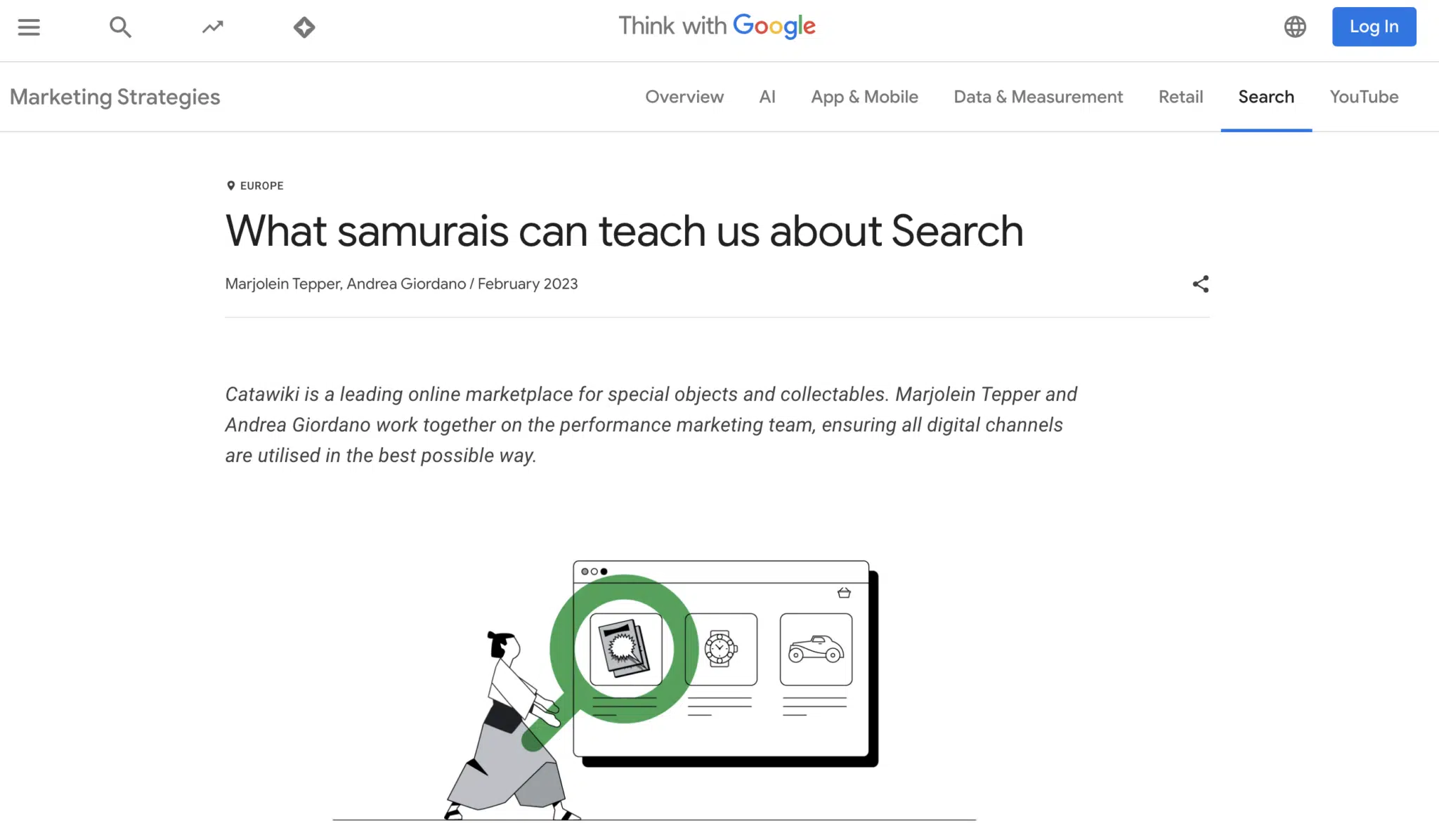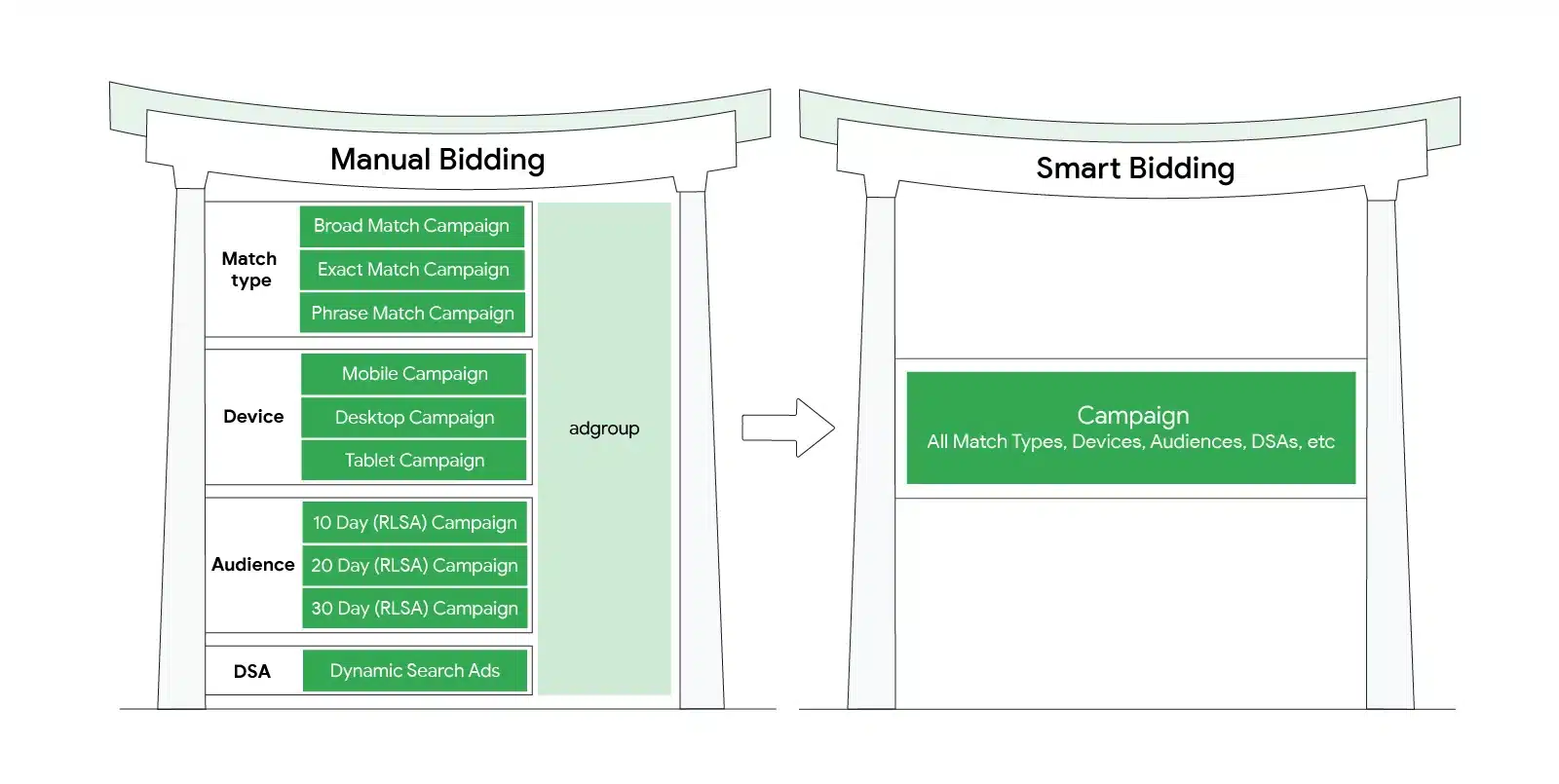The Hagakure approach to navigating Google AdsThink with Google: "What Samurai warriors Can Teach Us About Search"
Learn about the Hagakure method, an innovative approach to handling Google Ads that utilizes automation and simplicity for superior results.
Due to advancements in technology and users' shifting online habits, Google Ads has undergone significant change. Before, advertisers had to carefully oversee their campaigns. Utilizing data and automation is now given more attention.
As a result, the Hagakure method was developed, a fresh strategy that streamlines Google Ads management, encourages the use of broad match options, and makes use of Google's automation tools.
Here are the implications of Hagakure for Google Ads advertisers and some tips for using it to manage your paid search campaigns.
History of Hagakure
Hagakure" is a phrase from Yamamoto Tsunetomo's book, "Samurai Teachings," which was published in Japan in the 18th century. It highlighted principles like commitment and direction. The meaning of the word is "hidden by the leaves," implying hidden profundity.
SHagakure" is a phrase from Yamamoto Tsunetomo's book, "Samurai Teachings," which was published in Japan in the 18th century. It highlighted principles like commitment and direction. The meaning of the word is "hidden by the leaves," implying hidden profundity.
Similar to how samurais sought clarity in their actions, the Hagakure method in Google Ads is about discovering a straightforward way to successfully advertise.
This strategy aims to make digital advertising simpler while capturing the purposefulness that the samurais valued.
 |
| Think with Google: "What Samurai warriors Can Teach Us About Search" |
- For accuracy and possibly higher Quality Scores, SKAG focuses on creating unique ads for each keyword.
- STAG, on the other hand, strikes a balance between specificity and management ease by grouping related keywords under a single theme.
Hagakure, in contrast, places a strong emphasis on scale and automation while utilizing Google's machine learning.
Hagakure uses automation and Smart Bidding technologies for on-the-fly optimizations, whereas SKAG and STAG prioritize manual management and/or more control.
Additionally, Hagakure encourages simplicity by minimizing the quantity of entities such as campaigns and ad groups, making it simpler to manage as accounts grow.
 |
| What samurais can teach us about Search,” Think with Google |
Hagakure isn't exclusive, which is significant because it can be combined with SKAG or STAG techniques to create a customized strategy that makes use of automation and granularity.
"Modern search" and audience attribution automation (AAA) were previously associated buzzwords for a more straightforward account structure. Hagakure aims to simplify the complexities just as he does:
- In AAA, automation was used to precisely target audiences.
- By directly addressing user intent, modern search aimed to bring clarity and focus to search strategies.
- Machine learning is impeded by oversegmentation.
- For smart bidding to function at its best, data sets must be condensed and small.
- improved campaign administration.
- swift market shifts adjustments.
- better use of resources.
Simply put, the key is organized simplicity.
Hagakure is required because the accounts are now too disorganized. The result of marketers' attempts to manage every last detail was an excess of campaigns, ad groups, and keywords.
Data silos existed instead of being kept together, which made it difficult for automated bidding strategies and automation in general to function effectively.
Hagakure uses broad match types and automation in place of specific, hyper-narrow targeting to ensure that a larger, yet relevant audience, is reached.
With the aid of machine learning, Google's Smart Bidding modifies bids in response to audience behaviors in real-time, focusing resources on high-converting segments.
The tactic engages audiences dynamically while allowing algorithms to determine the best bid for each auction based on a variety of influencing factors. Hagakure decreases manual work by fusing automation and audience insights. In order to maximize efficiency, advertisers do not constantly change bids; the system does so.
The idea of a broad match is one of the Hagakure approach's most pervasive myths.
Broad match is frequently advised by Google, but it's important to understand that it's not a requirement. The suitability of broad match varies based on the specific goals and nuances of each campaign.
Therefore, marketers ought to feel free to test the Hagakure method both with and without this match type. Your strategy must be specifically tailored to the given circumstance in order to be effective.
Potential adverse impacts and objects to reflect about when implementing Hagakure
For advertisers accustomed to conventional setups, implementing the Hagakure method can be a significant change. It has to do with restructuring the campaign and changing one's perspective. Those accustomed to meticulous campaign management may find the initial transition difficult.
When using the Hagakure technique, feeling out of control is a common concern. More automation and combining ad groups may give the impression that advertisers aren't as involved. Even though the approach emphasizes simplicity, it's important to keep in mind campaign specifics.
Broad match can increase reach, but there are risks. Without careful oversight, advertisements may show up for unrelated searches, wasting money and possibly representing the brand incorrectly.
Advertisers must continuously review and improve their broad match strategies using negative keywords, despite Hagakure's emphasis on simplification.
Scaling search ads with Hagakure: A Case Study
Talking about a real case study is the best way to demonstrate Hagakure's potential. The ideal example is one of my largest clients to date, a shoe retailer with over a thousand brands and almost a million SKUs live.
After we started working together, shopping accounted for about 90% of the revenue, which prompted us to develop a search strategy. The search setup grew over three years, and by the beginning of 2019, we were managing:
- The 555 campaigns.
- ad groups, 56,673.
- 86,290 ads.
- 190,159 key phrases.
Even though the account grew too big and was challenging to manage, search revenue increased as a result of the expansion. Although common, the SKAG and STAG structures weren't scalable. This setup also brought about a number of difficulties.
Even with the extensive setup, sales were either flat or only slowly increasing, especially when the sizeable inventory was taken into account. The task of overseeing more than 500 search campaigns became too much.
The addition of new search campaigns connected to new brands or product lines in the inventory was the primary driver of revenue growth. The setup also had trouble adjusting to shifting seasonal items and varying product availability.
 |
| Jump in growth rate after implementing Hagakure |
Despite initial difficulties, we adopted a contemporary search methodology, which enabled us to leverage the current setup to achieve a remarkable 300% search growth.
By October, our search campaign revenue increased significantly year over year from €180,000 to over €480,000.
What is most impressive? With the same brands, goods, keywords, and advertising resources, we were successful.
- To fully realize the potential of Smart Bidding, account structures were refined, which was the major change.
- By combining several intricate campaigns into a single succinct campaign, we streamlined the procedure. Ad groups replaced individual campaigns, which had previously existed.
- Only brands with high conversion rates were kept. There were once 450 campaigns for fashion brands, but now there are only three.
- We created a single top-tier campaign that included the top eight brands, which accounted for about 75% of search sales. Each primary keyword had a separate, focused ad group.
- Choose the top campaigns you want to convert to a contemporary search.
- Run the report on search queries for the previous 30/60/90 days and look for search queries with more than one conversion.
- Run the 30/60/90 day keyword overview report and filter for keywords with more than one conversion.
- Combine those two reports to find the keywords that lead to conversions. Remove everything else.
- It is advised to recheck the reports for the past three, six, nine, and twelve months in order to safeguard yourself against seasonality.
- Aim to keep your keyword set to no more than 20 per ad group.









No comments: